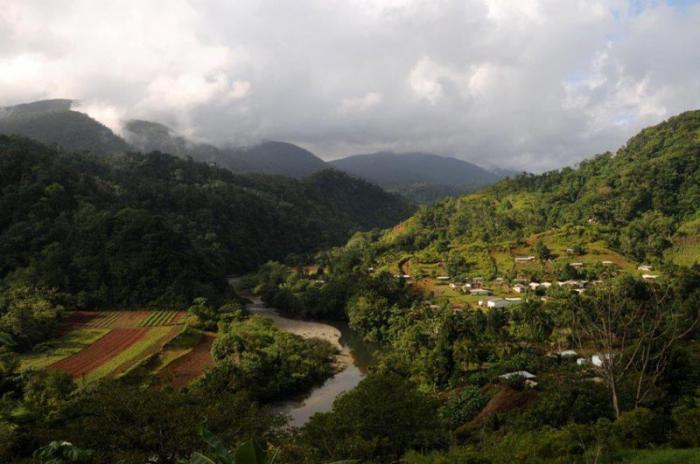Forest fire under control in eastern Cuban national park
- Written by ACN
- Published in Holguin
- Hits: 874
 Within the four sectors that make up the Park, La Melba is emblematic for the beauty of its landscape. Photo: Julio Larramendi
Within the four sectors that make up the Park, La Melba is emblematic for the beauty of its landscape. Photo: Julio Larramendi
After great efforts, the forest fire of great proportions detected last April 16 in areas of pine forests of the Alejandro de Humboldt National Park, a World Heritage Natural Site, is practically extinguished as of Wednesday. Specialized brigades were mobilized to control and combat these fires.
Gerardo Begué-Quiala, deputy director of the Environmental Services Unit, director of this important protected area, told the Cuban News Agency that, according to official reports, the fire started between the localities of Cayo Probado and Alto de Cruzata, in the municipality of Moa in Holguín, about 500 meters from the physical limit with Yateras, territory of the province of Guantánamo.
Progressively, and fanned by the force of the wind and large volumes of natural combustible material in the area, such as leaves, the fire spread to the southwest, to the Yarey river basin, in Yateras, to return again to parts of Moa, advancing towards the town of Tres Fiebres.
A large area of coniferous trees and a smaller proportion of charrascales forests, both habitats of valuable species of the Cuban fauna, were burned in the thicket, and although it is still early to quantify the damage, it could be considered around three thousand hectares affected, estimated the specialist.
After more than a week of doing everything possible in the intricate site, mobilizing helicopters, bulldozers and tanker trucks, the fire-fighting forces managed to control the spread with simultaneous attacks on both flanks of the flames, entering on foot due to the inaccessibility of the place, which prevented the approach of heavy equipment.
Begué-Quiala pointed out that there are still small remaining pockets burning, but within polygons under control in Moa, Ojito de Agua and Cayo Fortuna, and although they no longer seem to constitute a threat, their monitoring is maintained, taking into account the danger implied by the high temperatures, the drought, the air, and the roots and underground trees that are still burning.
At the head of the movement of the extinguishing forces (of the Forest Rangers and Forestry Corps of Moa and Yateras), the Municipal Defense Councils have been involved all this time, and volunteer brigades from different institutions and from the communities themselves have come to support the work.
More than a hundred men worked daily in the place of the incident, knowing the value of the Alejandro de Humboldt Park, main core of the Cuchillas del Toa Biosphere Reserve, and one of the insular and tropical places in the world with the greatest biodiversity, as UNESCO valued when in 2001 in Helsinki declared it a Natural World Heritage Site.
Since 2017, no events of this type have been recorded in the Humboldt park, and the current one is the largest in the history of the Park, considered a Cuban sanctuary of biota for its level of endemism and conservation, with more than 70,000 hectares spread over the peaks of the northeastern part of the Island, specifically in the Nipe-Sagua-Baracoa Orographic Group.
Soon it will be necessary to evaluate exactly what was damaged, the causes of the phenomenon, and activate the rehabilitation program of the areas, some with direct management actions, and others, given their remoteness, would remain under the good protection of natural regeneration and the proven resilience of the ecosystem to overcome adverse circumstances.
